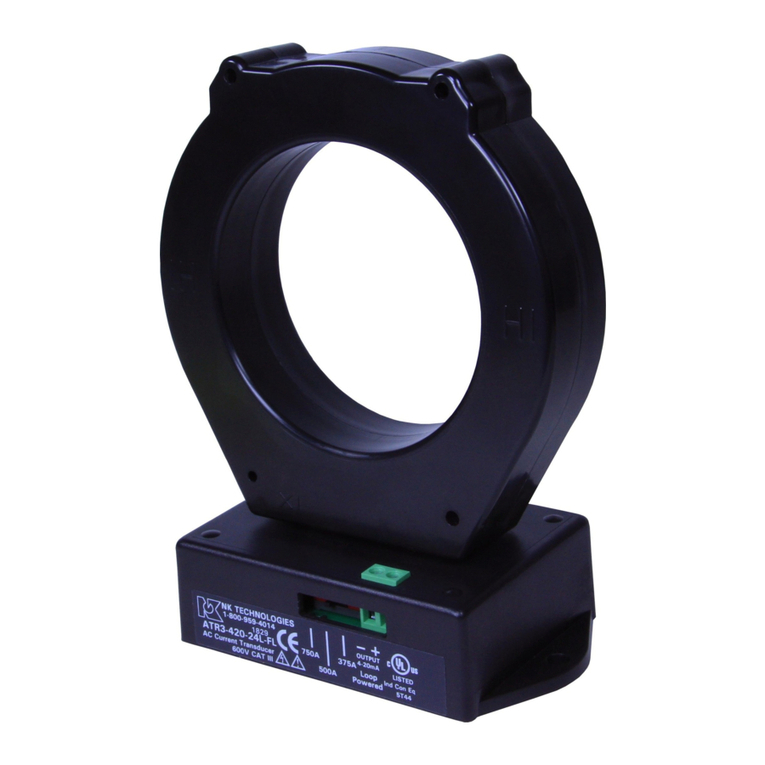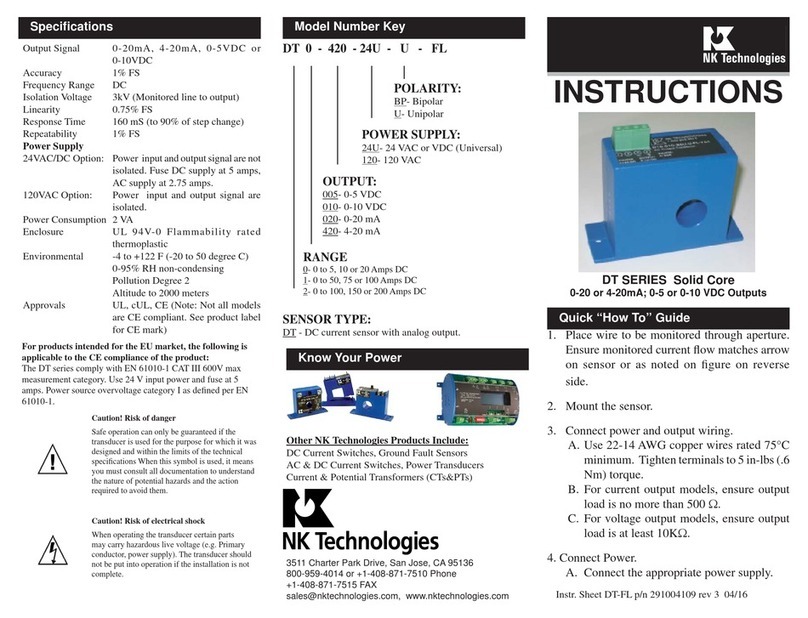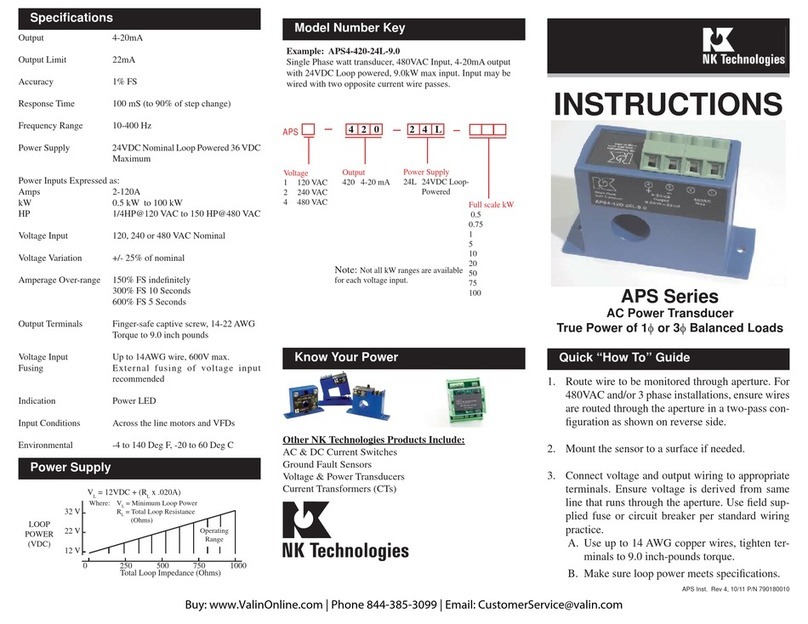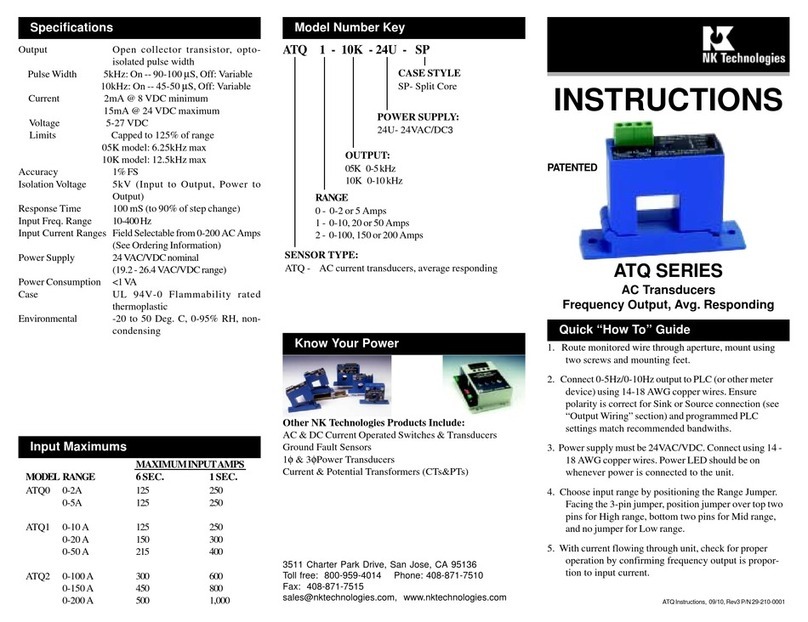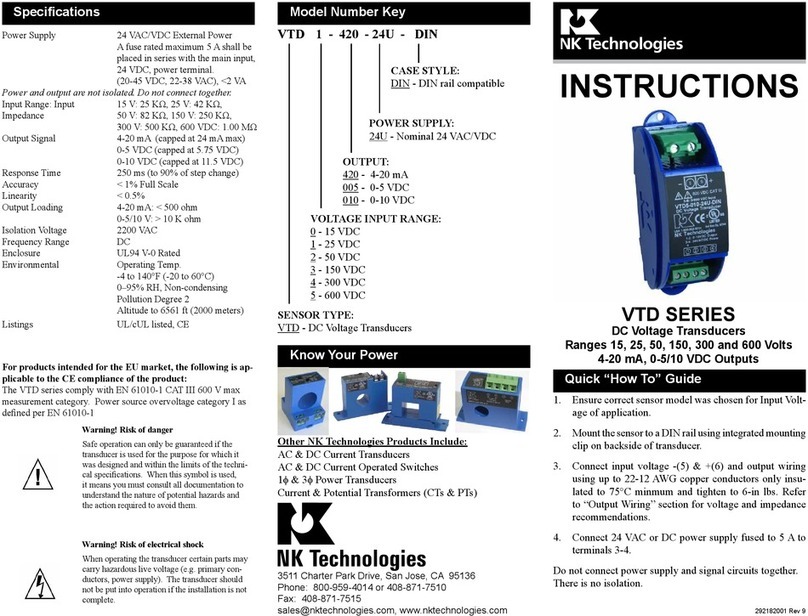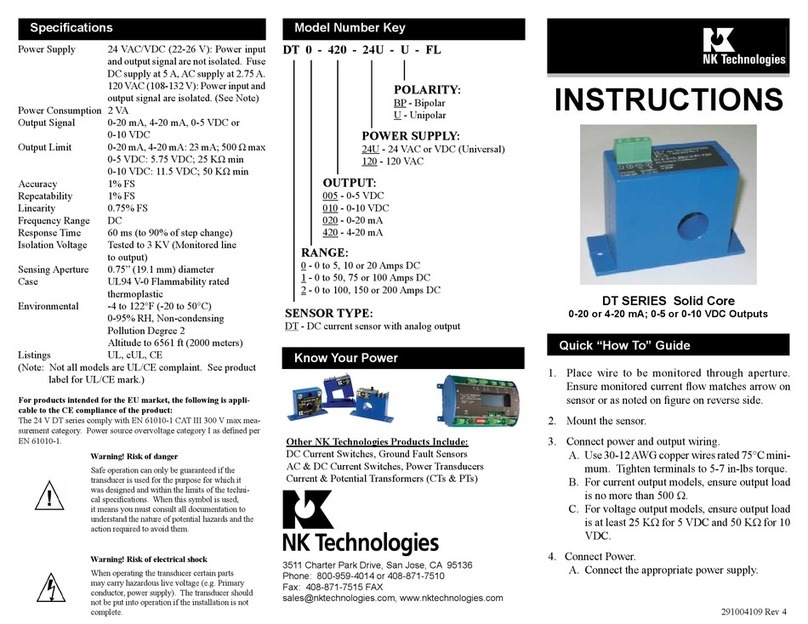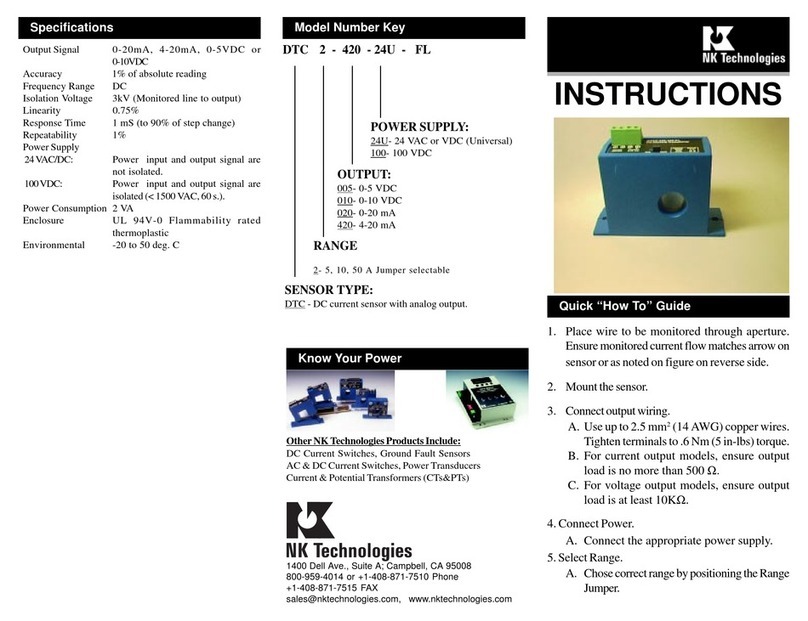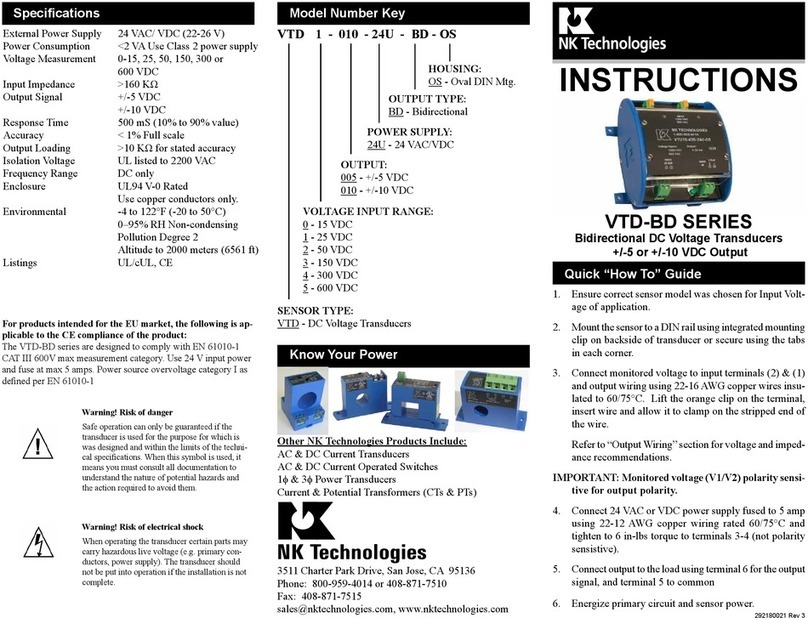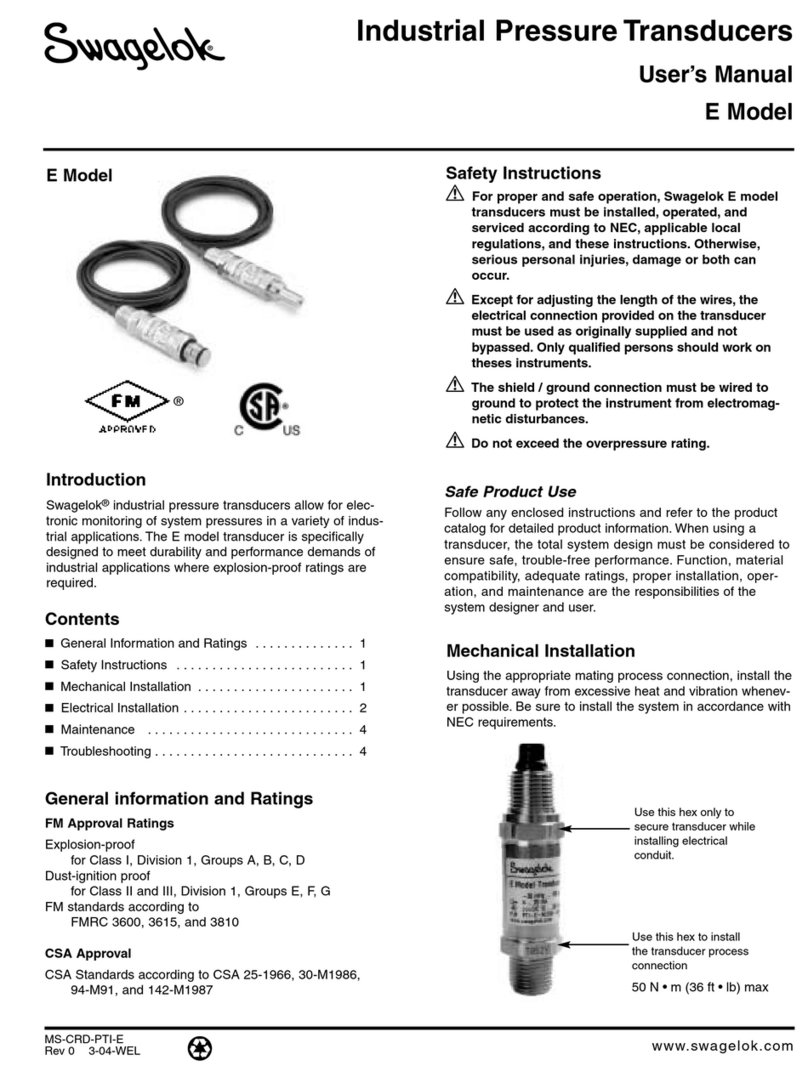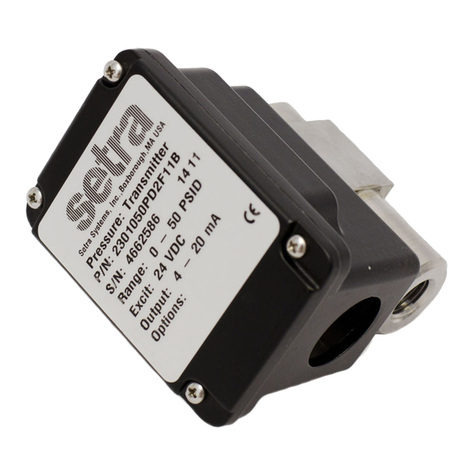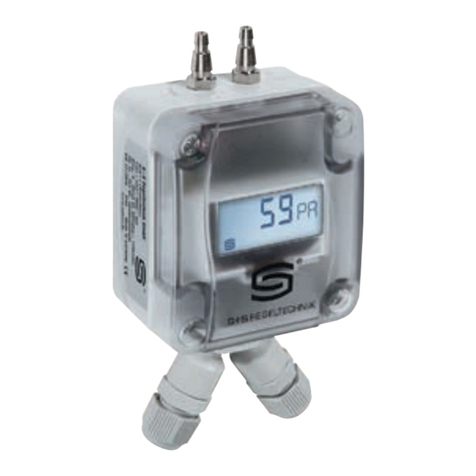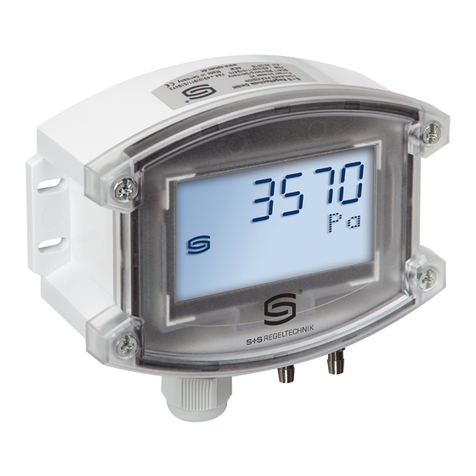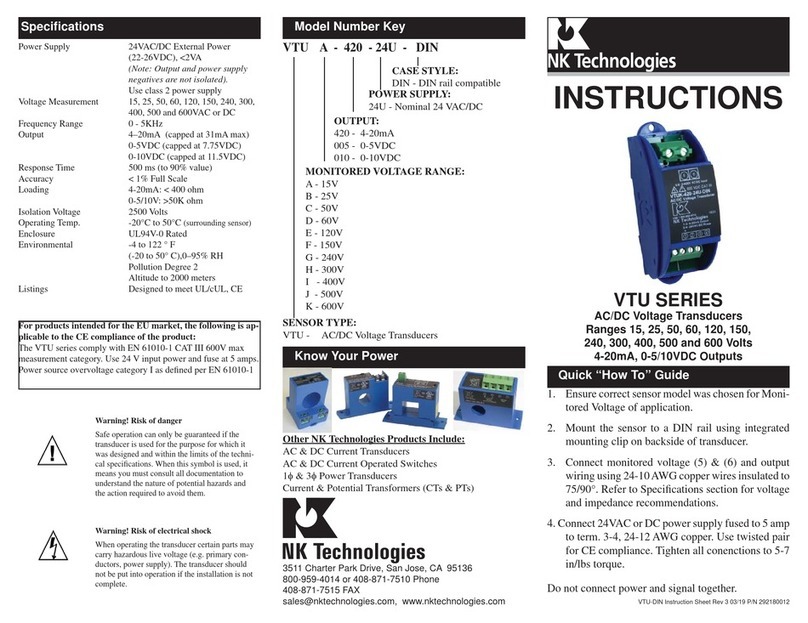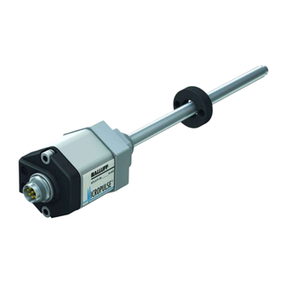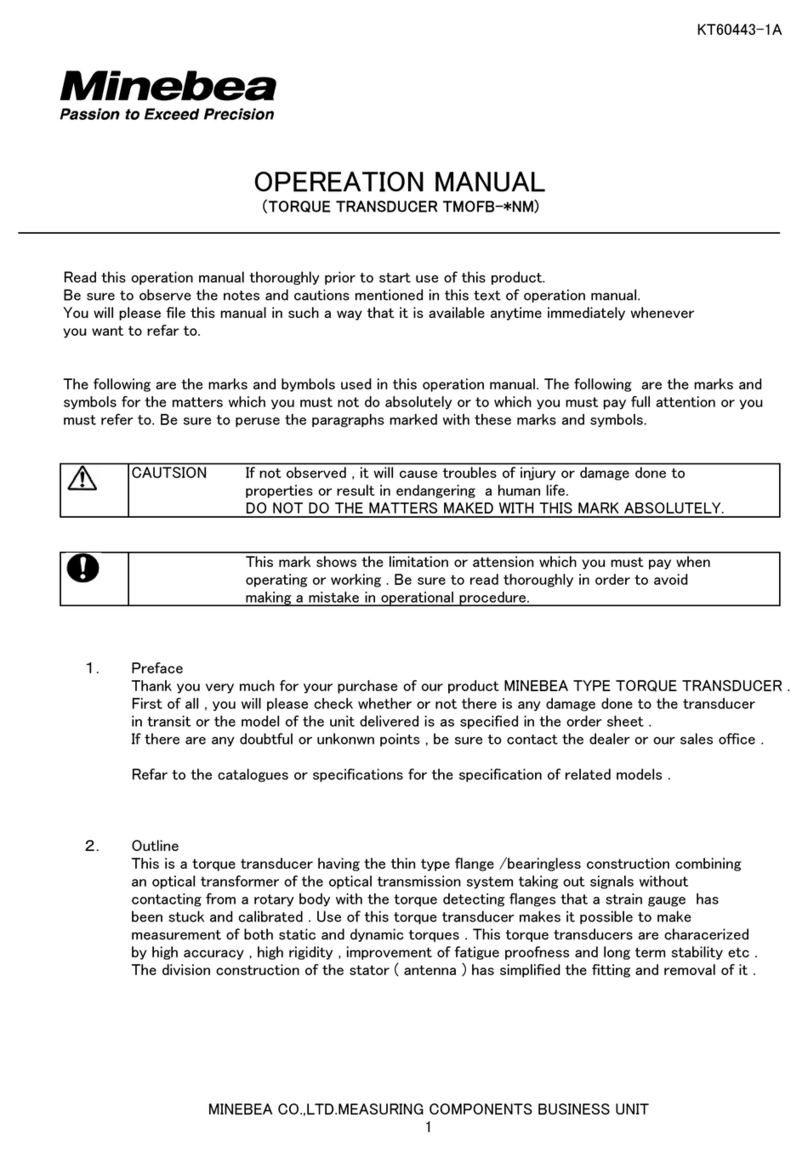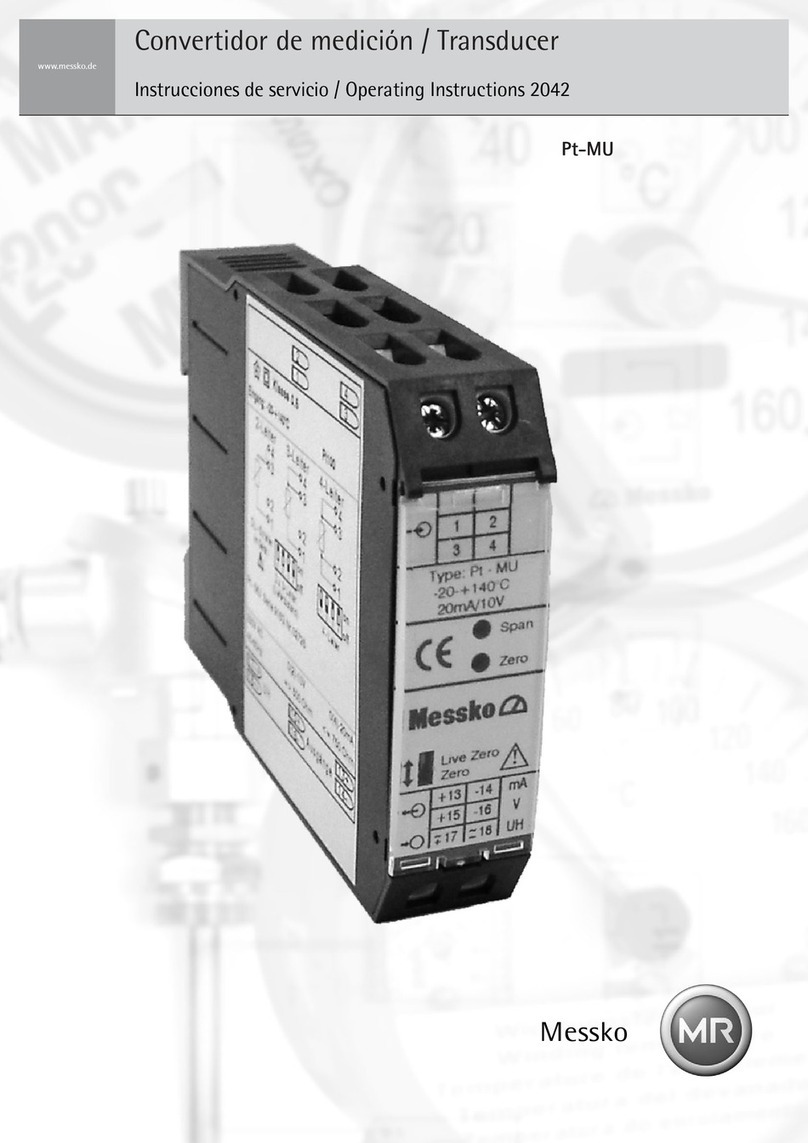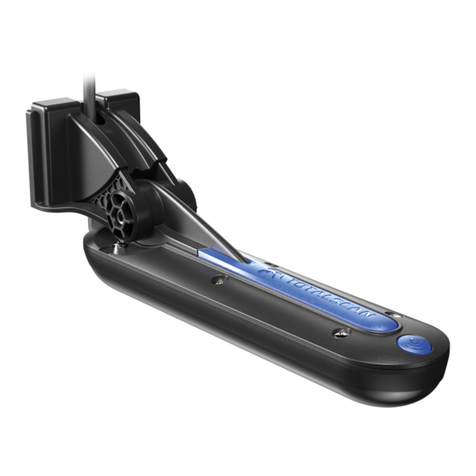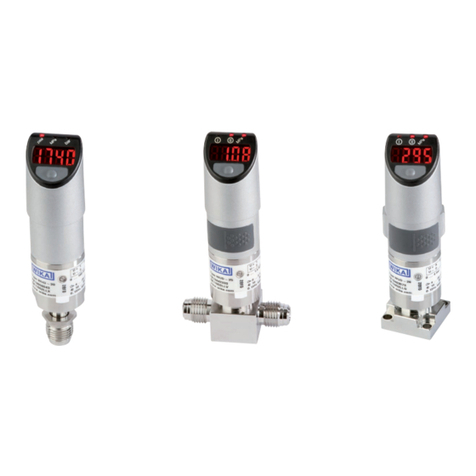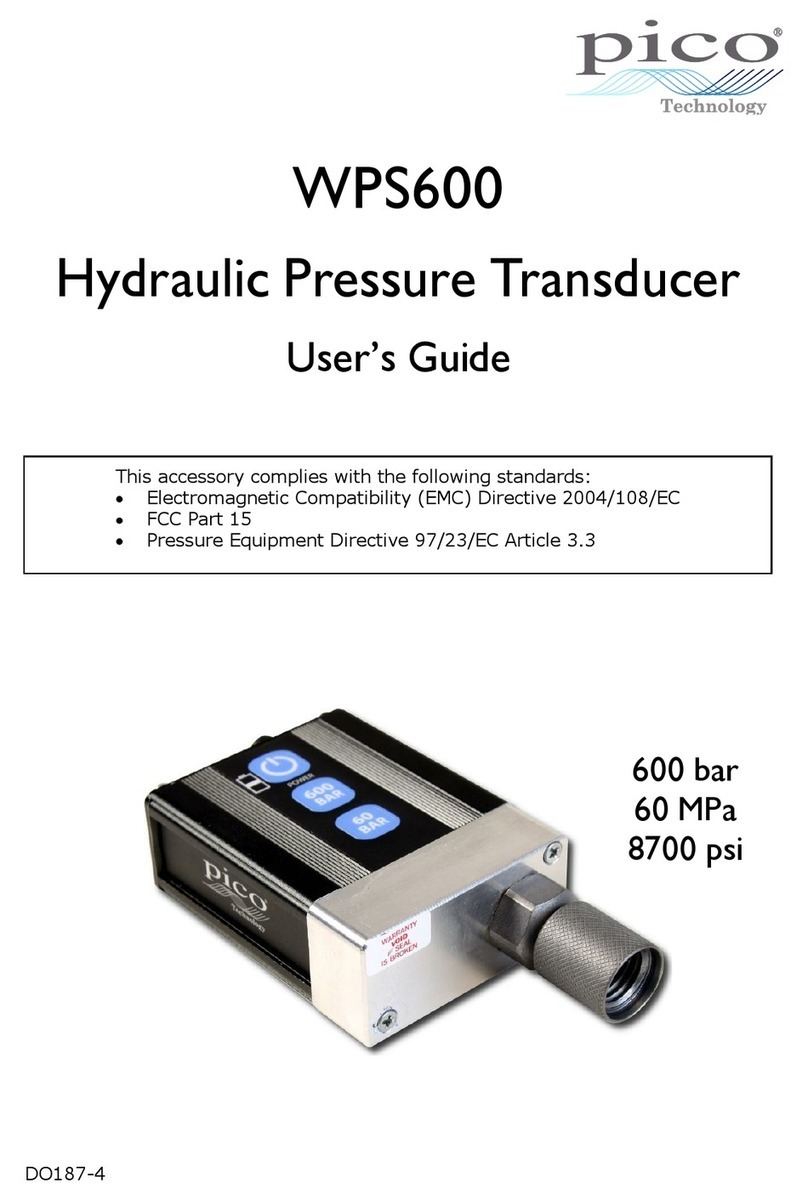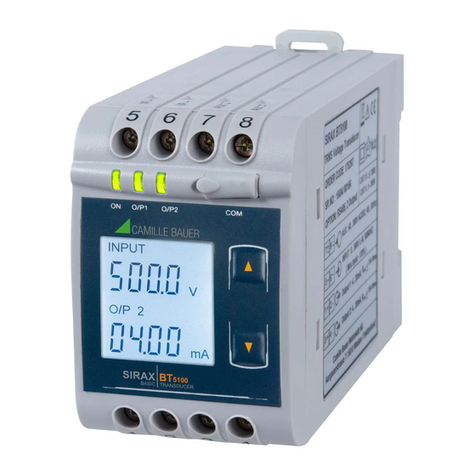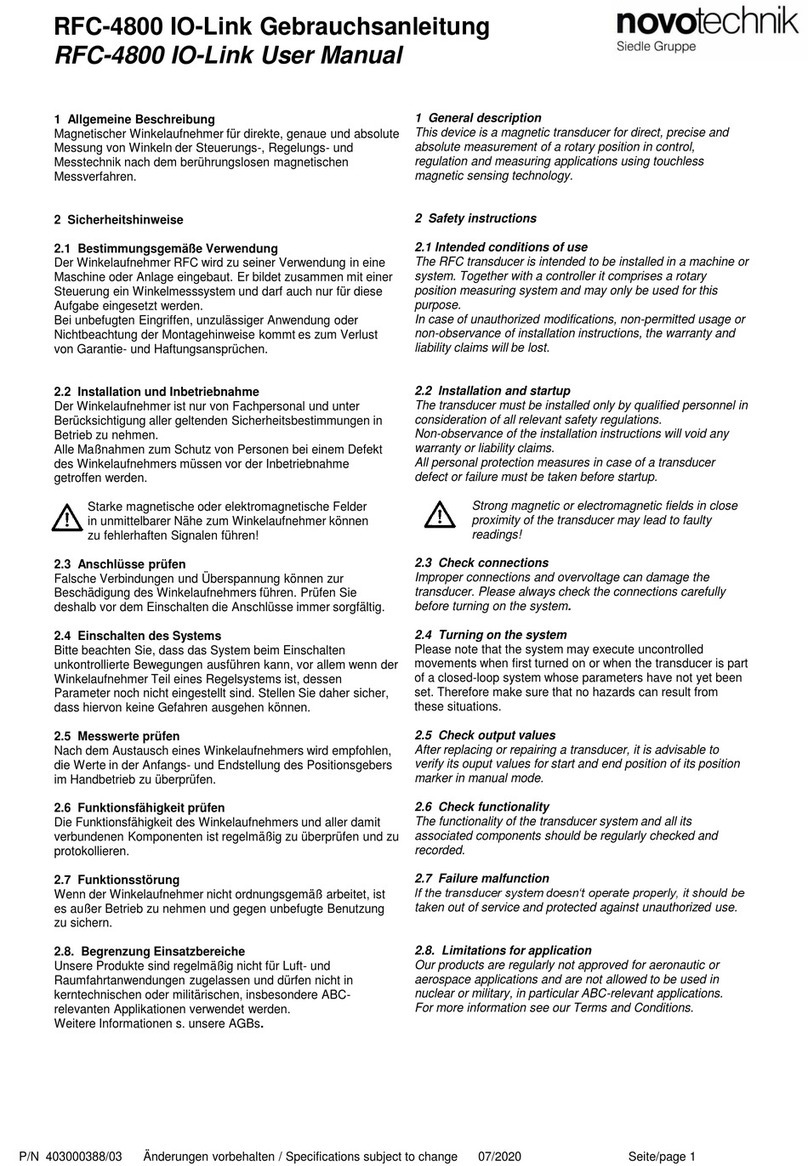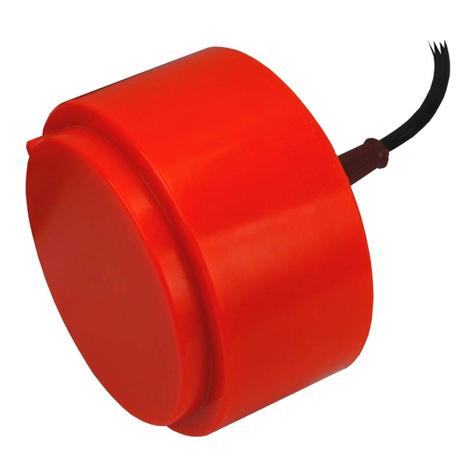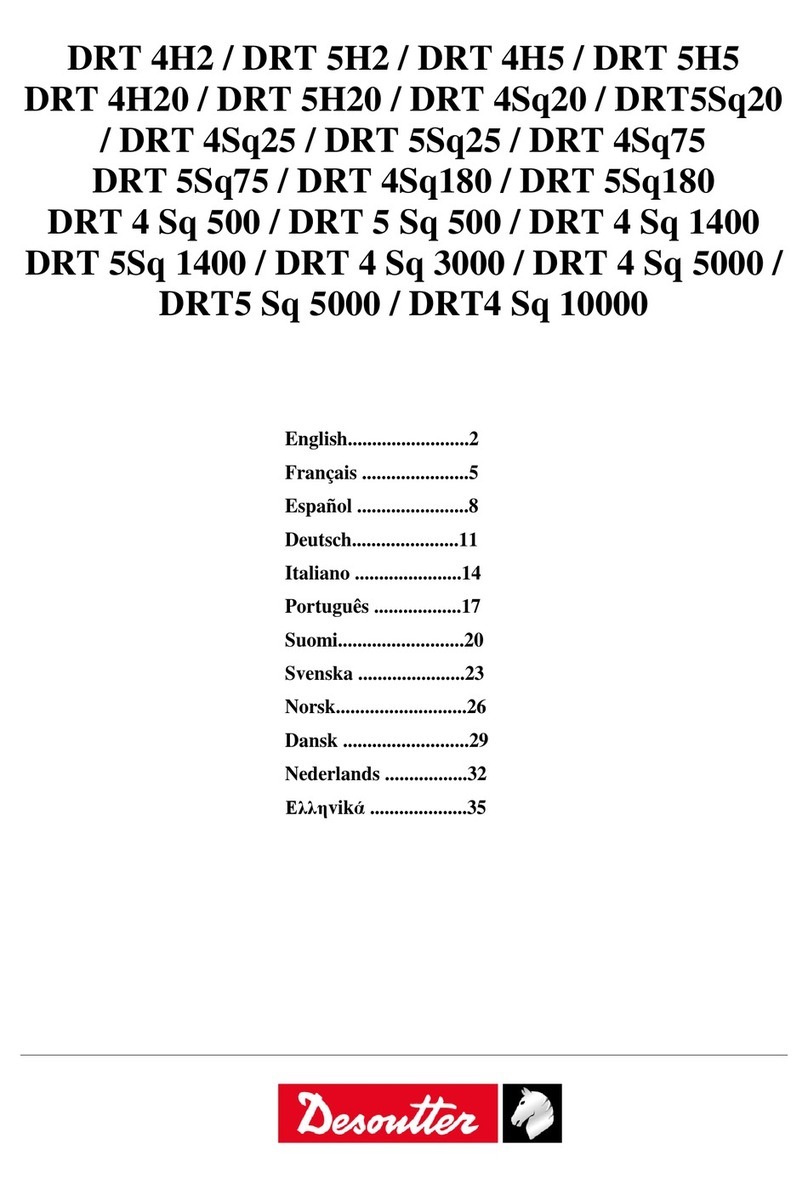
AT/ATR-TH Series current transducers are intended to
monitor consumption of three phase loads. They provide
an analog signal proportional to the current in each of the
three phases, and another which will be proportional to the
average of the three phase currents. The transducer can be
mounted on a back panel using screws through the mounting
holes in the base or snapped onto a DIN rail. Each model
can be set for three current measurement ranges.
Description
Wiring
Wiring Schematic Diagram
Output Signal:
Connect positive signal to controller or display using 75/90°
C rated copper wire, tighten the terminals on the transducer
to 5-7 inch-pounds torque. Confirm that the connected load
impedance is less than 500 Ωfor current signals or at least
2K Ωfor voltage signals.
Monitored Circuit:
Each of the three phases pass through the three windows
of the top section. All conductors should pass through the
sensor in the same direction (from the front or the back)
for appearance, but not required for accuracy or reliability.
If the phases use multiple conductors, all wires of one phase
must pass through the same sensing window or aperture.
The transducer is designed to monitor circuits to 600 VAC,
whether the conductor is insulated or bare. Each aperture has
an inside diameter of 0.74” (18.8 mm), allowing 4/0 THHN
(120 mm²) to pass through easily. Centering the conductor
in the aperture is not necessary.
NC NO
12 345678
0-10 VDC
0-5 VDC
4-20 mA
LOW MID HIGH
RANGE
SELECTION
SWITCH
POWER
NO POLARITY
++ ++
+-
PLC,
Controller, etc.
9
10
MONITORED CIRCUIT CONDUCTORS
--
--
ABCAverage
Top View
1. Sensor has no output:
A. Power source is not energized or connected to the
transducer. Check voltage at terminals 9 and 10. 24V
models do not have isolation between the power and the
output signals.
B. The monitored circuit is not energized or drawing cur-
rent. Check that the monitored circuit is energized.
C. Polarity is not properly matched. The output signals
are polarity sensitive, and the result would be no signal
through the HMI or whatever is reading the transducer
outputs.
2. Output Signal Too Low
A. The transducer range may be too high to read the
monitored circuit current. Select a model with a lower
range, or loop each conductor through the sensing win-
dows to increase the current through each aperture.
B. Power supply may not enough capacity to operate the
transducer outputs. use a power supply with at least 6VA
available to operate the transducer.
3. Outputs are always at the minimum (4mAor zero
volts)
A. The Monitored load is not energized or is not AC. Be
sure that the monitored circuit is AC with a frequency
between the model limits (AT average responding 50 to
60 hertz, RMS models 30 to 100 hertz).
4. Outputs are always at the maximum (20mAor 5 or
10 volts)
A. The Monitored load is drawing more current than the
transducer range. Select a model with a higher range, or
set the range selection to a higher range. Be very careful
when selecting the model to suit the application. Check
the range selection slide switch. Check the actual cur-
rent used with a hand held ammeter, and set the range
accordingly.
Power Supply:
Connect power supply to transducer as shown in wiring
diagram. Use 75/90° C rated copper wire. The power sup-
ply terminals are not polarity sensitive. Tighten terminals
to 5-7 inch-pounds torque. For 24 volt powered models,
use a Class 2 power limited source and fuse at 5 amps
maximum.
For 120 volt powered models, fuse at 5 amps maximum.
Troubleshooting
ABC
Application:
Monitoring current is a great tool to use in a preventative
maintenance program. All loads are protected against
high level of over current with a circuit breaker or fuses,
but monitoring over time can detect small increases in
current which point to failing bearings or the need for
lubrication. Detecting under current conditions is just as
important, but much more complicated than over current
detection. If a pump has a blocked or restricted intact or
discharge, the drive motor will draw less than normal
current. The pump is not pushing the product as it was de-
signed, but moving only the product in the impeller cavity.
A pump with an open intake or discharge will also draw
less than normal current. Either condition can cause a
lot of damage, but when the discharge is open, some very
hazardous material can be spread quickly.
Under current is also seen when a belt breaks, comes
off the sheave grooves or needs to be tightened; or if a
coupling shears or is loose.
